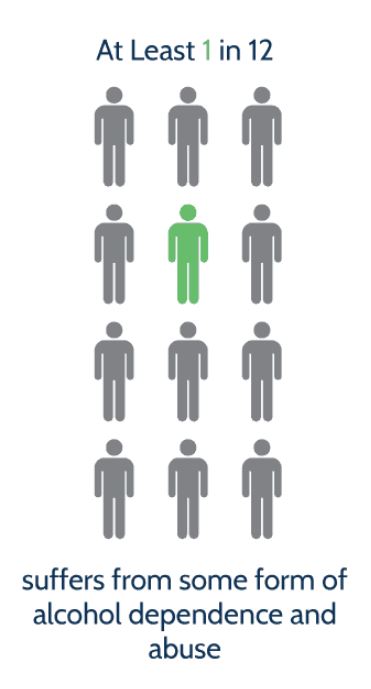What is Disorderly Conduct?
Disorderly conduct refers to a category of behavior characterized by actions that disturb public peace, disrupt order, or potentially endanger the well-being of others. It often involves disruptive, unruly, or offensive actions, causing public or private disturbances.
This article delves into the intricacies of disorderly conduct, shedding light on its definition, implications, and manifestations. Additionally, we explore the symptoms associated with conduct disorder, a related concept that further enriches our comprehension of these behavioral challenges. By examining these topics, we aim to provide insight into the complex landscape of human behavior and the factors that contribute to it.
At We Level Up Treatment Center, we offer comprehensive and personalized Conduct Disorder Treatment programs designed to address the unique needs of each individual.
Conduct Disorder Symptoms
Conduct Disorder is a psychological condition primarily diagnosed in children and adolescents, marked by a persistent pattern of behavior that violates the rights of others and disregards societal norms and rules. These behaviors often extend beyond the typical rebelliousness seen in youth, encompassing a range of aggressive, antisocial, and disruptive actions. Here’s an explanation of some common Conduct Disorder symptoms:
- Aggression Towards People and Animals: Individuals with Conduct Disorder may exhibit physical aggression, including fighting, bullying, and intimidating others. They might also harm animals, potentially reflecting a lack of empathy or concern for others’ well-being.
- Destruction of Property: Purposeful destruction of property, such as vandalism or arson, is a characteristic behavior. This may reflect anger, frustration, or a lack of impulse control.
- Deceitfulness and Theft: Individuals with Conduct Disorder often engage in deceitful behaviors, such as lying or stealing. This can encompass minor dishonesty and, more significantly, theft or fraud.
- Severe Violations of Rules: A consistent disregard for rules and authority is a hallmark of Conduct Disorder. This can manifest as truancy, running away from home, or consistently breaking curfew.
- Lack of Remorse or Guilt: Individuals with Conduct Disorder may show a lack of remorse or guilt for their actions, even when they have harmed others. They might justify their behavior or minimize the consequences.
- Impulsivity: Impulsive behavior is typical, leading to sudden actions without considering the potential outcomes. This impulsivity can contribute to conflicts, accidents, and dangerous situations.
- Lack of Empathy: A notable trait is the difficulty in understanding or empathizing with the feelings and perspectives of others. This lack of empathy can contribute to conflicts and strained relationships.
- Social Isolation: While some individuals with Conduct Disorder might engage in aggressive behaviors, others may withdraw from social interactions, feeling disconnected from peers and family.
- Early Onset: Symptoms often emerge during childhood or early adolescence. If left untreated, these behaviors might escalate in severity over time.


Skip To:
Learn More:.
Disorder Conduct Fact Sheet
Disorderly Conduct Definition
Disorderly conduct refers to disruptive and unruly behaviors that can disturb public peace, create disturbances, or potentially endanger individuals’ safety.
Behaviors: Examples include public intoxication, fighting, using offensive language, causing excessive noise, disrupting public events, and engaging in provocative or offensive actions.
Legal Considerations: Laws regarding disorderly conduct vary by jurisdiction. What constitutes disorderly conduct and its associated penalties can differ from place to place.
Severity: Disorderly conduct charges can range from minor infractions to more serious offenses. The severity of the charge often depends on the nature of the behavior and the potential harm caused.
Intent: Many laws consider the intent behind the behavior. Intentional actions to disrupt public order or provoke others are often critical in determining charges.
Public Safety: Laws are in place to maintain public safety and order. The aim is to prevent escalating situations into violence or other dangers.
Disorderly Conduct Statistics
By examining these statistics, we aim to understand better the prevalence, patterns, and impact of disorderly conduct incidents. From demographics to legal outcomes, this overview provides a foundational understanding of disorderly conduct and its societal implications.
- Arrest Rates: It is a standard offense law enforcement agencies encounter. In many jurisdictions, it ranks among the top non-violent offenses leading to arrests.
- Demographics: Demographic information, such as age, gender, and location, can vary. Young adults and males tend to be overrepresented in reported incidents.
- Alcohol and Drug Involvement: Many incidents are linked to alcohol or drug use. Intoxication can often be a contributing factor to disruptive behaviors in public settings.
- Urban vs. Rural: Incidents might be more prevalent in urban areas due to higher population density and increased social interactions.
30%
A notable percentage of disorderly conduct incidents involve alcohol or drug use, often exceeding 30% or more of reported cases.
Source: NIMH
3-16%
Oppositional Defiant Disorder is estimated to affect around 3-16% of children and adolescents, with higher prevalence in younger age groups.
Source: FBI Uniform Crime Reporting
2:1 or 3:1
ODD commonly coexists with other disorders. Around 50-65% of children with ODD may also meet the criteria for attention-deficit/hyperactivity disorder (ADHD).
Source: WHO
Adjustment Disorder with Disturbance of Conduct
Adjustment Disorder with Disturbance of Conduct is a psychological condition that falls within the broader category of adjustment disorders. Adjustment disorders are characterized by emotional or behavioral symptoms that emerge in response to a stressful life event or significant change. In the case of Adjustment Disorder with Disturbance of Conduct, the individual exhibits behavioral disruptions as a reaction to stressors.
Key Features of Adjustment Disorder with Disturbance of Conduct:
- Stressor Trigger: The development of this disorder is linked to a specific stressor or life event. Stressors include significant life changes like relationship issues, job loss, or financial difficulties.
- Behavioral Response: Unlike other adjustment disorders that primarily involve emotional symptoms, Adjustment Disorder with Disturbance of Conduct is characterized by behavioral reactions. These behaviors may violate societal norms or the rights of others.
- Disruptive Behaviors: The individual’s reaction to the stressor leads to behavioral disruptions. These can encompass a range of actions, such as fighting, vandalism, stealing, or other conduct that deviates from their typical behavior.
- Duration: The behavioral disturbances are time-limited and typically occur within three months of the stressor’s onset. However, the specific duration may vary depending on the individual and circumstances.
- Severity: The level of severity can vary widely. Some individuals may exhibit minor disturbances, while others might engage in more severe or aggressive behaviors.

Conduct Disorder in Adults
Conduct Disorder (CD) is a behavioral disorder commonly associated with childhood and adolescence, characterized by persistent patterns of behaviors that violate the rights of others, defy societal norms, and disregard the feelings and well-being of others. While the diagnosis of Conduct Disorder is more frequently applied to younger individuals, some of these disruptive behavioral patterns can persist into adulthood.
Key Features of Conduct Disorder in Adults:
- Behavioral Continuation: Conduct Disorder in adults refers to the continuation of behaviors characteristic of CD during childhood and adolescence. These behaviors, which are often aggressive, antisocial, and impulsive, may persist beyond the developmental years.
- Aggressive and Antisocial Behaviors: Adults with Conduct Disorder might engage in aggressive behaviors, such as physical violence, fighting, and bullying. They may also exhibit antisocial behaviors, such as deceitfulness, manipulation, and disregard for the rights of others.
- Criminal Activities: Individuals with Conduct Disorder in adulthood may have a higher likelihood of engaging in criminal activities, such as theft, vandalism, and even more serious offenses.
- Relationship Challenges: Conduct Disorder can strain personal relationships, including those with family members, romantic partners, and friends. Adults with this disorder might struggle to maintain healthy and functional relationships.
- Employment and Academic Implications: The disruptive behaviors associated with Conduct Disorder can affect career prospects, job stability, and academic performance.
Challenges and Diagnosis:
Diagnosing Conduct Disorder in adults can be complex due to several factors:
- Developmental Transition: The transition from adolescence to adulthood involves changes in societal expectations and responsibilities. What was considered problematic behavior during childhood might be evaluated differently in adult contexts.
- Co-Existing Conditions: Conduct Disorder can coexist with other mental health disorders, such as substance use disorders, personality disorders, and mood disorders. Differentiating between these conditions is essential for accurate diagnosis and treatment.
- Maturity and Coping: As individuals age, they might develop more mature coping mechanisms and have a greater awareness of the consequences of their actions, potentially affecting the presentation of their behavior.
Conduction Disorder
Addressing Conduct Disorder in adults involves understanding the individual’s unique history, context, and specific behavioral patterns. Early intervention and ongoing treatment can improve self-regulation, interpersonal skills, and overall quality of life. It’s essential to seek help from mental health professionals specializing in adult behavior disorders for accurate assessment and effective treatment strategies.
At We Level Up Treatment Center, we recognize that early intervention is vital. Our tailored treatment plans are designed to equip individuals with the tools they need to manage Conduct Disorder and thrive.

Get Your Life Back
Find Hope & Recovery. Get Safe Comfortable Detox, Addiction Rehab & Dual Diagnosis Trused Care.
7/365 Line (844) 597-1011Adjustment Disorder with Mixed Disturbance of Emotions and Conduct
Adjustment Disorder with Mixed Disturbance of Emotions and Conduct is a psychological condition falling under the category of adjustment disorders. It is characterized by emotional and behavioral symptoms in response to a significant stressor or life event. This disorder reflects the intricate interplay between emotional turmoil and behavioral disruptions.
Key Features of Adjustment Disorder with Mixed Disturbance of Emotions and Conduct:
- Stressor Trigger: This disorder emerges in response to a specific stressor, such as a major life change, trauma, relationship difficulties, or financial challenges. The stressor triggers a range of emotional and behavioral reactions.
- Mixed Symptoms: Adjustment Disorder with Mixed Disturbance of Emotions and Conduct involves a blend of emotional and behavioral symptoms. Emotional symptoms might include depression, anxiety, or mood swings, while behavioral symptoms can encompass disruptive or impulsive behaviors.
- Emotional Symptoms: Individuals may experience a variety of emotional responses, which can include sadness, hopelessness, irritability, and excessive worry. These emotions often exceed what would be considered a normal reaction to the stressor.
- Conduct Disturbances: Behavioral disruptions are a hallmark of this disorder. These behaviors might violate societal norms, such as aggressive outbursts, reckless actions, or defiance of rules and authority figures.
- Duration: Symptoms of this disorder emerge within three months of the onset of the stressor and tend to improve as the individual adapts to the situation or as the stressor’s impact diminishes.
Differentiating Characteristics:
Adjustment Disorder with Mixed Disturbance of Emotions and Conduct shares some similarities with other adjustment disorders but is distinguished by its combination of emotional and behavioral symptoms:
- Emotion-Behavior Interplay: Unlike other adjustment disorders that primarily manifest emotional distress or behavioral disruptions, this disorder reflects the interconnectedness of emotional turmoil and behavioral responses.
- Mixed Presentation: The co-occurrence of emotional and behavioral symptoms sets this disorder apart from those primarily characterized by only one type of symptom.
Oppositional Defiant Disorder vs. Conduct Disorder
Oppositional Defiant Disorder (ODD) and Conduct Disorder (CD) are both childhood behavioral disorders, but they differ in terms of their characteristics, severity, and the nature of the behaviors they involve. Here’s a comparison between the two:
| Aspect | Oppositional Defiant Disorder (ODD) | Conduct Disorder (CD) |
|---|---|---|
| Defining Behaviors | Defiance, arguing, refusal, annoyance | Aggression, fighting, deceit, theft |
| Target of Behaviors | Authority figures (parents, teachers) | Others, societal norms, laws |
| Severity and Duration | Milder, persisting at least 6 months | More severe, persisting 12+ months |
| Scope of Impact | Limited to authority figures | Milder, persisting for at least 6 months |
| Long-Term Implications | Less likely to lead to severe issues | Potential for severe issues in adulthood |
| Aggressiveness | Generally not physically aggressive | Often includes physical aggression |
| Legal Consequences | Rarely involves criminal activities | May involve criminal behaviors |
| Relational Impact | Strains relationships with authority figures | Affects various relationships |
| Treatment and Intervention | Therapy and parental support crucial | Therapy and early intervention crucial |
Both ODD and CD require accurate diagnosis and appropriate intervention. Early intervention and targeted treatment, often involving therapy and parental support, are essential in addressing these disorders and improving the child’s well-being and functioning. If you suspect your child is exhibiting symptoms of either disorder, it’s essential to consult with a mental health professional for a comprehensive assessment and guidance.
Adjustment Disorder with Mixed Disturbance of Emotions and Conduct
Adjustment Disorder with Mixed Disturbance of Emotions and Conduct is a psychological condition falling under the category of adjustment disorders. It is characterized by emotional and behavioral symptoms in response to a significant stressor or life event. This disorder reflects the intricate interplay between emotional turmoil and behavioral disruptions.
Key Features of Adjustment Disorder with Mixed Disturbance of Emotions and Conduct:
- Stressor Trigger: This disorder emerges in response to a specific stressor, such as a major life change, trauma, relationship difficulties, or financial challenges. The stressor triggers a range of emotional and behavioral reactions.
- Mixed Symptoms: Adjustment Disorder with Mixed Disturbance of Emotions and Conduct involves a blend of emotional and behavioral symptoms. Emotional symptoms might include depression, anxiety, or mood swings, while behavioral symptoms can encompass disruptive or impulsive behaviors.
- Emotional Symptoms: Individuals may experience a variety of emotional responses, which can include sadness, hopelessness, irritability, and excessive worry. These emotions often exceed what would be considered a normal reaction to the stressor.
- Conduct Disturbances: Behavioral disruptions are a hallmark of this disorder. These behaviors might violate societal norms, such as aggressive outbursts, reckless actions, or defiance of rules and authority figures.
- Duration: Symptoms of this disorder emerge within three months of the onset of the stressor and tend to improve as the individual adapts to the situation or as the stressor’s impact diminishes.
Differentiating Characteristics:
Adjustment Disorder with Mixed Disturbance of Emotions and Conduct shares some similarities with other adjustment disorders but is distinguished by its combination of emotional and behavioral symptoms:
- Emotion-Behavior Interplay: Unlike other adjustment disorders that primarily manifest emotional distress or behavioral disruptions, this disorder reflects the interconnectedness of emotional turmoil and behavioral responses.
- Mixed Presentation: The co-occurrence of emotional and behavioral symptoms sets this disorder apart from those primarily characterized by only one type of symptom.
Oppositional Defiant Disorder vs. Conduct Disorder
Oppositional Defiant Disorder (ODD) and Conduct Disorder (CD) are both childhood behavioral disorders, but they differ in terms of their characteristics, severity, and the nature of the behaviors they involve. Here’s a comparison between the two:
| Aspect | Oppositional Defiant Disorder (ODD) | Conduct Disorder (CD) |
|---|---|---|
| Defining Behaviors | Defiance, arguing, refusal, annoyance | Aggression, fighting, deceit, theft |
| Target of Behaviors | Authority figures (parents, teachers) | Others, societal norms, laws |
| Severity and Duration | Milder, persisting at least 6 months | More severe, persisting 12+ months |
| Scope of Impact | Limited to authority figures | Milder, persisting for at least 6 months |
| Long-Term Implications | Less likely to lead to severe issues | Potential for severe issues in adulthood |
| Aggressiveness | Generally not physically aggressive | Often includes physical aggression |
| Legal Consequences | Rarely involves criminal activities | May involve criminal behaviors |
| Relational Impact | Strains relationships with authority figures | Affects various relationships |
| Treatment and Intervention | Therapy and parental support crucial | Therapy and early intervention crucial |
Both ODD and CD require accurate diagnosis and appropriate intervention. Early intervention and targeted treatment, often involving therapy and parental support, are essential in addressing these disorders and improving the child’s well-being and functioning. If you suspect your child is exhibiting symptoms of either disorder, it’s essential to consult with a mental health professional for a comprehensive assessment and guidance.
First-Time Disorderly Conduct Charge
A “First-Time Disorderly Conduct Charge” refers to an individual being charged with the offense of disorderly conduct for the first time. It is a criminal charge that generally involves engaging in disruptive, unruly, or offensive behavior that disturbs the peace and order of a public place or community. The specifics of disorderly conduct charges can vary based on local laws and regulations.

- Definition: It involves disruptive behavior that disturbs public peace.
- Penalties: Penalties include fines, community service, probation, or short-term jail.
- Criminal Record: Conviction can lead to a criminal record with future implications.
- Defenses: Defenses can include protected speech or self-defense arguments.
- Legal Counsel: Seek legal guidance to navigate the process and explore defenses.
- Subsequent Offenses: Addressing the charge can prevent more severe penalties later.
It’s essential to note that the specifics of disorderly conduct charges can vary widely based on jurisdiction, local laws, and the circumstances of the incident. If you or someone you know is facing a first-time disorderly conduct charge, seeking legal advice and understanding the relevant laws in your area are crucial steps to take.
Compare and Contrast Conduct Disorders with Personality Disorders
Both conduct disorders and personality disorders are psychological conditions that impact behavior and functioning. However, they differ in their nature, causes, and the focus of their symptoms. Here’s a comparison and contrast between the two:
| Aspect | Conduct Disorders | Personality Disorders |
|---|---|---|
| Definition | Behavioral disorders in youth | Enduring patterns of thoughts, feelings, and behaviors |
| Key Features | Aggressive, rule-breaking behavior | Distorted self-perception, diverse types |
| Onset | Childhood or adolescence | Late adolescence or adulthood |
| Influence on Relationships | Strain relationships | Cause interpersonal conflicts and complexities |
| Duration | May change with maturity | Relatively stable over time |
| Impact on Self and Others | Impulsive behavior, less reflective | Deeply ingrained beliefs, relational dynamics |
| Treatment | Behavioral modification | Address deep-seated beliefs, relational dynamics |
| Focus of Symptoms | External behaviors | Internal thought patterns, emotional experiences |
| Longevity | May improve with age | Relatively stable over time |
| Underlying Factors | Environmental influences | Genetics, biology, early experiences |
| Severity | Can be severe | Typically deeply ingrained, pervasive |
Conduct Disorder versus Oppositional Defiant Disorder
Here’s a comparison between Conduct Disorder (CD) and Oppositional Defiant Disorder (ODD) formatted as a table:
| Aspect | Conduct Disorder (CD) | Oppositional Defiant Disorder (ODD) |
|---|---|---|
| Definition | Often directed toward family and authority | The pattern of defiance and hostility toward authority |
| Age of Onset | Adolescence or earlier | Typically in childhood |
| Severity | More severe and aggressive behaviors | Milder, less aggressive behaviors |
| Types of Behaviors | Aggression, rule-breaking, antisocial acts | Defiance, arguing, disobeying authority |
| Rule Violations | Violates rules and laws | Primarily disobeys authority figures |
| Externalizing Behavior | Displays behaviors outwardly | This may lead to more serious problems |
| Relation to Others | May harm others and property | Focuses on noncompliance with authority |
| Risk for Future Issues | Less likely to escalate to severe issues | Less likely to escalate to serious issues |
| Comorbidity with Other Disorders | Often coexists with substance abuse | May coexist with ADHD and mood disorders |
| Diagnostic Criteria | More extensive criteria | Less extensive criteria |
| Legal Consequences | Can involve criminal activities | Primarily disrupts daily functioning |
First-class Facilities & Amenities
Trusted Integrated Addiction & Mental Health Rehabilitation Treatment
Rehab Centers TourEstablished Addiction Centers. Serene Private Facilities. Inpatient rehab programs vary.
Addiction Helpline (844) 597-1011Comprehensive recovery success experience, backed by a Team w/ History of:
15+
Years of Unified Experience
100s
5-Star Reviews Across Our Centers
10K
Recovery Success Stories Across Our Network
- Low Patient to Therapist Ratio
- Onsite Medical Detox Center
- Comprehensive Dual-Diagnosis Treatment
- Complimentary Family & Alumni Programs
- Alumni Coaching, Recovery & Personal Development Events
Is Disorderly Conduct a Misdemeanor?
Yes, disorderly conduct is typically considered a misdemeanor offense in many jurisdictions. It involves engaging in disruptive, unruly, or offensive behavior that disturbs public peace or order. While the specifics can vary based on local laws and regulations, these offenses are often categorized as misdemeanors.
Misdemeanors are considered less serious offenses than felonies and are generally associated with penalties such as fines, probation, community service, or a short-term jail sentence. However, it’s essential to note that the classification as a misdemeanor may vary depending on the jurisdiction and the severity of the behavior.
To understand the precise legal status in your specific jurisdiction, it’s recommended to consult local laws or legal professionals who can provide accurate and up-to-date information.

How to Get a Disorderly Conduct Charge Dropped
The process for getting a disorderly conduct charge dropped can vary depending on the jurisdiction and the case’s specific circumstances. Here are some general steps to consider if you’re looking to have a disorderly conduct charge dropped:
- Consult an Attorney: Seek legal guidance from an experienced attorney.
- Review Evidence: Assess the strengths and weaknesses of the case.
- Identify Defenses: Work with your attorney to find defenses against the charges.
- Negotiate: Explore negotiation options with the prosecution.
- Diversion Programs: Consider pretrial diversion or counseling programs.
- Attend Hearings: Participate in required court hearings.
- Trial Preparation: Prepare for a trial if necessary.
- Follow Advice: Cooperate and follow your attorney’s guidance.
Remember that the process for having a disorderly conduct charge dropped can be complex and may not guarantee a specific outcome. Working closely with an attorney specializing in criminal defense will give you the best chance of achieving a favorable resolution to your case. Remember that laws and procedures can vary significantly based on jurisdiction, so seeking legal advice specific to your situation is crucial.
Conduct Disorder Treatment at We Level Up Treatment Center
Conduct Disorder (CD) treatment involves a comprehensive approach that addresses the underlying causes of the disorder, teaches new coping skills, and helps individuals develop healthier behaviors. The goal is to foster positive change and improve overall well-being. Here are vital strategies often used in CD treatment:
- Therapeutic Interventions:
- Cognitive-behavioral therapy (CBT): Focuses on identifying and changing negative thought patterns and behaviors. Teaches skills for problem-solving, anger management, and impulse control.
- Family Therapy: Involves the family in treatment to improve communication, set boundaries, and address any family dynamics contributing to the disorder.
- Dialectical Behavior Therapy (DBT): Helps individuals regulate emotions, tolerate distress, and build interpersonal skills.
- Skill Development:
- Social Skills Training: Teaches appropriate ways to interact with peers and authority figures, improving relationships and reducing conflicts.
- Emotional Regulation Skills: Helps manage intense emotions and express feelings healthily.
- Problem-Solving Skills: Equips individuals to find alternative solutions to challenges without resorting to aggression or rule-breaking.
- Anger Management:
- Teaches techniques to recognize triggers, manage anger, and respond to frustrating situations calmly and constructively.
- Parent Training:
- Provides parents with tools to manage disruptive behaviors, set consistent limits, and use effective discipline strategies.
- School Support:
- Collaborates with educators to create an environment that supports positive behavior, academic success, and social integration.
- Medication (in some cases):
- If coexisting conditions like ADHD or mood disorders are present, medication might be considered to manage symptoms.
- Multisystemic Therapy (MST):
- A comprehensive approach involving the family, school, and community resources to address the various influences on behavior.
- Behavioral Contracts:
- Collaboratively sets specific goals and rewards for positive behaviors, encouraging self-regulation and responsibility.
- Positive Reinforcement:
- Praises and rewards individuals for displaying desired behaviors, reinforcing positive change.
- Long-Term Planning:
- Focuses on preventing relapse and maintaining positive changes over time.
CD treatment requires a tailored approach considering the individual’s unique circumstances and needs. Early intervention is crucial to prevent escalation and long-term consequences. A multidisciplinary team should collaborate with therapists, counselors, educators, and parents to provide support and guidance. If you or someone you know is dealing with Conduct Disorder, seeking professional help is essential for effective treatment and positive outcomes.
We Level Up Treatment Center is committed to helping individuals with Conduct Disorder achieve long-term positive outcomes by providing a range of therapeutic interventions, skills training, and ongoing support.
Specialized, Accredited, 5-Star Reviewed, Evidence-based Addiction & Mental Health Programs. Complete Behavioral Health Inpatient Rehab, Detox plus Co-occuring Disorders Therapy.
CALL(844) 597-1011End the Addiction Pain. End the Emotional Rollercoaster. Get Your Life Back. Start Drug, Alcohol & Dual Diagnosis Mental Health Treatment Now. Get Free, No-obligation Guidance by Substance Abuse Specialists Who Understand Addiction & Mental Health Recovery & Know How to Help.
Popular Disorderly Conduct FAQs
-
What does Disorderly Conduct mean?
Disorder conduct refers to disruptive, unruly, or offensive behavior that disturbs public peace or order. It can encompass various actions, such as fighting, using offensive language, or causing disturbances.
-
Is Disorder Conduct a Criminal Offense?
Yes, disorder conduct is generally considered a criminal offense. It involves violating societal norms and can lead to legal consequences.
-
Can Minors Face Disorder Conduct Charges?
Yes, minors can be charged with disorderly conduct if their behavior meets legal criteria. However, the legal process for juvenile offenders may differ from adults.
8 Steps & Tips for Maintaining Your Mental Wellbeing Informative Video
Video Script
8 Steps for Mental Wellbeing & How To Improve Mental Health In The Workplace
- Staying Positive
- Practicing Gratitude
- Taking Care of Your Physical Health
- Connecting With Others
- Developing a Sense of Meaning and Purpose in Life
- Developing Coping Skills
- Meditation
- Relaxation Techniques
Experience Transformative Recovery at We Level Up Treatment Centers.
See our authentic success stories. Get inspired. Get the help you deserve.
Start a New Life
Begin with a free call to an addiction & behavioral health treatment advisor. Learn more about our dual-diagnosis programs. The We Level Up Treatment Center Network delivers recovery programs that vary by each treatment facility. Call to learn more.
- Personalized Care
- Caring Accountable Staff
- World-class Amenities
- Licensed & Accredited
- Renowned w/ 100s 5-Star Reviews
We’ll Call You
Search Disorderly Conduct Symptoms, Diagnosis, and Treatment. We Level Up Mental Health Topics & Resources
Sources
[1] Giourou E, Skokou M, Andrew SP, Alexopoulou K, Gourzis P, Jelastopulu E. Complex posttraumatic stress disorder: The need to consolidate a distinct clinical syndrome or to reevaluate features of psychiatric disorders following interpersonal trauma? World J Psychiatry. 2018 Mar 22;8(1):12-19. Doi 10.5498/wjp.v8.i1.12. PMID: 29568727; PMCID: PMC5862650. PTSD
[2] Nestgaard Rød Å, Schmidt C. Complex PTSD: what is the clinical utility of the diagnosis? Eur J Psychotraumatol. 2021 Dec 9;12(1):2002028. Doi 10.1080/20008198.2021.2002028. PMID: 34912502; PMCID: PMC8667899.
[3] Complex PTSD – PTSD: National Center for PTSD (.gov) Learn More:
[4] Complex PTSD Patients https://www.science.gov/topicpages/c/complex+ptsd+patients.html
[5] Complex Trauma – Substance Abuse and Mental Health Services Administration (SAMHSA)
[6] Complex Posttraumatic Stress Disorder/Disorders of Extreme Stress (CP/DES) in Sexually Abused Children: An Exploratory Study – Office of Justice Programs (.gov)
[7] COMPLEX TRAUMA, COMPLEX REACTIONS – https://www.dhss.delaware.gov/dsamh/files/si10_1396_article1.pdf
[8] Mann SK, Marwaha R. Posttraumatic Stress Disorder. [Updated 2023 Jan 30]. In: StatPearls [Internet]. Treasure Island (FL): StatPearls Publishing; 2023 Jan-. Available from: https://www.ncbi.nlm.nih.gov/books/NBK559129/
[9] Miao XR, Chen QB, Wei K, Tao KM, Lu ZJ. Posttraumatic stress disorder: from diagnosis to prevention. Mil Med Res. 2018 Sep 28;5(1):32. Doi 10.1186/s40779-018-0179-0. PMID: 30261912; PMCID: PMC6161419.
[10] Post-Traumatic Stress Disorder (PTSD) – National Institute of Mental Health (NIMH)








